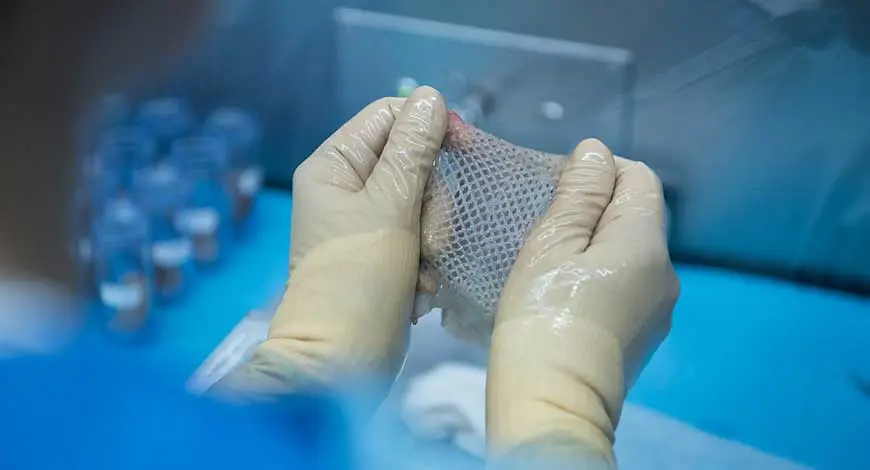About Indian Army’s Skin Bank:
- It was launched to help treat severe skin burn injuries and other skin-related conditions for service personnel and their families.
- The first-of-its-kind facility established in the Armed Forces Medical Services is staffed with trained medical professionals, including plastic surgeons, tissue engineers, and specialised technicians.
- It will serve as a centralised hub for the collection, processing, storage, and distribution of skin grafts, providing a “critical resource” for military medical centres across the country.
- What is a Skin Bank?
- A skin bank is a facility where skin is taken from an eligible donor, and processed, and stored under appropriate temperature for up to five years.
- Skin from a deceased person can be donated within six hours after death.
- Anyone can donate skin, irrespective of sex and blood group. The donor’s minimum age should be 18 years.
- The skin of persons suffering from AIDS, Hepatitis B & C, Sexually Transmitted Diseases, Skin Cancer, Active skin Disease and Septicemia are considered unfit for donation.
- This donated skin is then collected and processed over five to six weeks and frozen until it’s needed.
- The skin is generally preserved in 85% glycerol solution. It is stored between 4-5 degrees Celsius for up to 5 years.
- When a burn victim requires skin for their injuries, a surgical procedure called skin grafting is conducted.
- What is Skin Grafting?
- It is a simple process when a piece of healthy skin is transplanted to a different area of the body where the skin is damaged or missing.
- There are two main types of skin grafts: autograft (skin is taken from another part of the patient’s own body) and allograft (skin is taken from a donor, often sourced from a skin bank).
- Any skin can be used on anybody, and within two to three weeks post-grafting, the doctors can determine whether the patient is accepting it or not.
Q1: What is glycerol?
Glycerol is a naturally occurring alcohol. It is an odorless liquid that is used as a solvent, sweetening agent, and also as medicine. When glycerol is in the intestines, it attracts water into the gut, softening stools and relieving constipation. When glycerol is in the blood, it attracts water so that the water stays in the body longer. This might help an athlete exercise for longer. People use glycerol for constipation, improving athletic performance, and for certain skin conditions.
Source: Indian Army launches skin bank for burn victims: All you need to know
Last updated on December, 2025
→ Check out the latest UPSC Syllabus 2026 here.
→ Join Vajiram & Ravi’s Interview Guidance Programme for expert help to crack your final UPSC stage.
→ UPSC Mains Result 2025 is now out.
→ UPSC Notification 2026 is scheduled to be released on January 14, 2026.
→ UPSC Calendar 2026 is released on 15th May, 2025.
→ The UPSC Vacancy 2025 were released 1129, out of which 979 were for UPSC CSE and remaining 150 are for UPSC IFoS.
→ UPSC Prelims 2026 will be conducted on 24th May, 2026 & UPSC Mains 2026 will be conducted on 21st August 2026.
→ The UPSC Selection Process is of 3 stages-Prelims, Mains and Interview.
→ UPSC Result 2024 is released with latest UPSC Marksheet 2024. Check Now!
→ UPSC Prelims Result 2025 is out now for the CSE held on 25 May 2025.
→ UPSC Toppers List 2024 is released now. Shakti Dubey is UPSC AIR 1 2024 Topper.
→ UPSC Prelims Question Paper 2025 and Unofficial Prelims Answer Key 2025 are available now.
→ UPSC Mains Question Paper 2025 is out for Essay, GS 1, 2, 3 & GS 4.
→ UPSC Mains Indian Language Question Paper 2025 is now out.
→ UPSC Mains Optional Question Paper 2025 is now out.
→ Also check Best IAS Coaching in Delhi

















